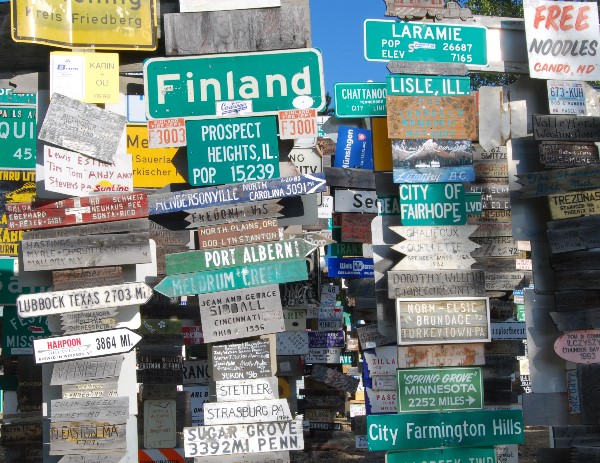“Everything should be 2 clicks from the homepage.”
Clients still tell me that this is a requirement for their websites. I can understand why they believe this to be a good thing – it seems logical that fewer clicks equals a shorter, simpler path. This is flawed thinking for a few reasons.
Cognitive load up, satisfaction down
If every page is a few clicks from the homepage – you are likely providing too many options. Our brains optimally process 7 +/- 2 items in a list. And if you have several lists or groupings of links, buttons, and menus, that is a lot of options to process.
Everything you add detracts and distracts from everything else. While content may be 2 clicks away, think about the mental processing it takes to evaluate all of the choices you’re providing. That’s cognitive load and it has a negative impact on the user experience and their perceived satisfaction, even if they eventually get to the content they want.
“Hey, can you add this to the homepage?”
When someone arrives at your homepage, they are trying to leave as quickly as possible. They have a question or keyword in their head, and as soon as they see it they will click deeper into your site. The 80/20 rule applies: it is far more effective to focus on direct access to the 2 or 3 top tasks and provide broad, clear buckets for the rest that will get them closer.
Not everything can be a priority. Organizations will play the “it’s political” card, to justify why their 12 pieces of content need to be on the homepage. Unless someone has a legit, evidence-backed user story to go with the request, stay strong and push back.
Homepage handcuffs
Another reason “2 clicks away” flawed thinking is that organizations are too reliant on their homepage. Yes, it is at the top of the hierarchy, but this is the wild web. It’s non-linear by design and you have no control where people land on your site.
In fact, you should be working hard to decrease your dependence on your homepage as a starting point. Getting customers directly to deep, niche content should be your approach to minimizing clicks: quality referral links, broad organic search, and an engaged community.
Where do I click?

The fact that this myth is still prevalent is testament to the volume of poor user experiences. I have facilitated hundreds of usability tests and when people complain about clicks, it is because they couldn’t decide which was the right click, there were too many wrong turns, back clicks, and circular paths. There are many reasons this happens:
- Vague hyperlinks (click here, learn more)
- Misleading buttons (Do you want to cancel? Yes / cancel)
- Menus with jargon or internal language
- Many similar choices: “What’s the difference between resources and tools?”
- Trying to click things that aren’t links
These cause hesitation, which breeds frustration. Imagine taking a road trip to someplace you’ve never been and your directions don’t match up with the road signs. Was that Exit 7 or Route 7? Main Street or Main Avenue? Your trip would feel much longer and you’d arrive much grumpier than if you made the same journey with clear directions. If that was the case, you’d say, “Wow, that didn’t take as long as I thought,” regardless of the turns in the road.
Motor through the content
When navigation labels are clear, language is unambiguous, and clickable things are the only things that look clickable, then making the click is automatic. Clicking is “motor load” and it is way less taxing on the brain than cognitive load. Research shows that a clear path with lots of clicks provides a more satisfying user experience than a shorter, obstacle-filled one.
How you can minimize frustration:
- Focus your homepage on clear access to your top tasks
- Say no to requests to add stuff to the homepage – they must have an evidence-backed user story!
- Increase the number of diverse landing pages on your site
- Do some usability testing to see how people complete top tasks. Don’t forget to test your language.
Confidence in the click
The difference is confidence. If someone is confident in what they will find when they make a click, it is a non-decision. Don’t shy away from taking your visitors on a journey through your content – just make sure the directions are clear. In the end, every page on your website might very well be 2 clicks from the homepage. But this is NOT A STRATEGY to aspire to.
If you think the paths on your site need clearing, put me to work doing usability testing or an audit.
Learn a little more about cognitive load.
